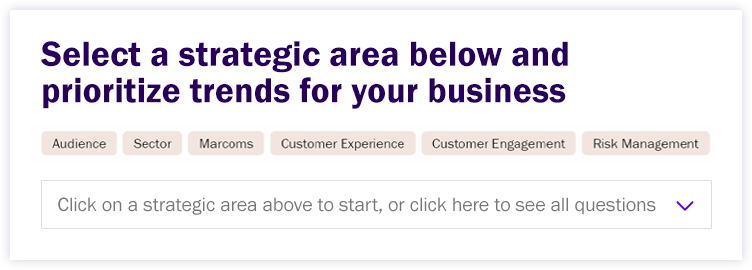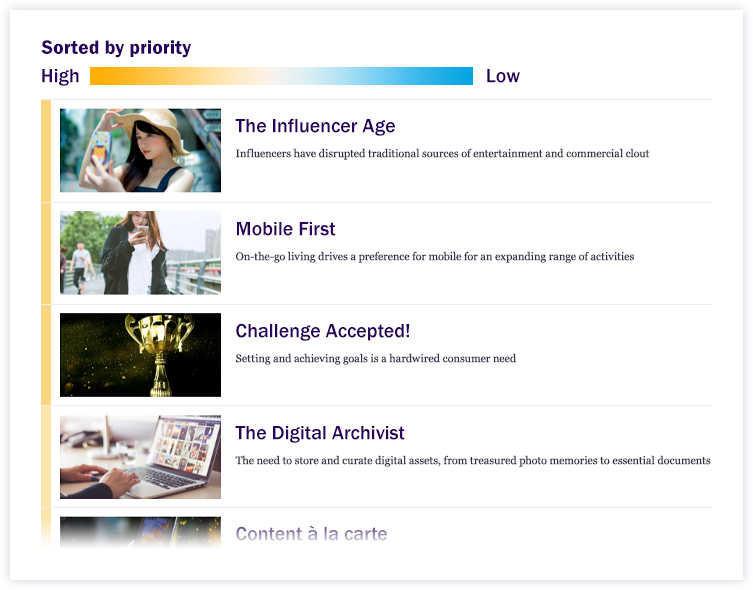Can I compare two markets?
Yes – edit your comparison market to compare the two groups. At the top of your list you’ll see trends that are distinctive for your new audience, at the bottom you’ll find trends that are more relevant for your current audience. Explore the trends in the middle to find areas of common ground between the two audiences.





